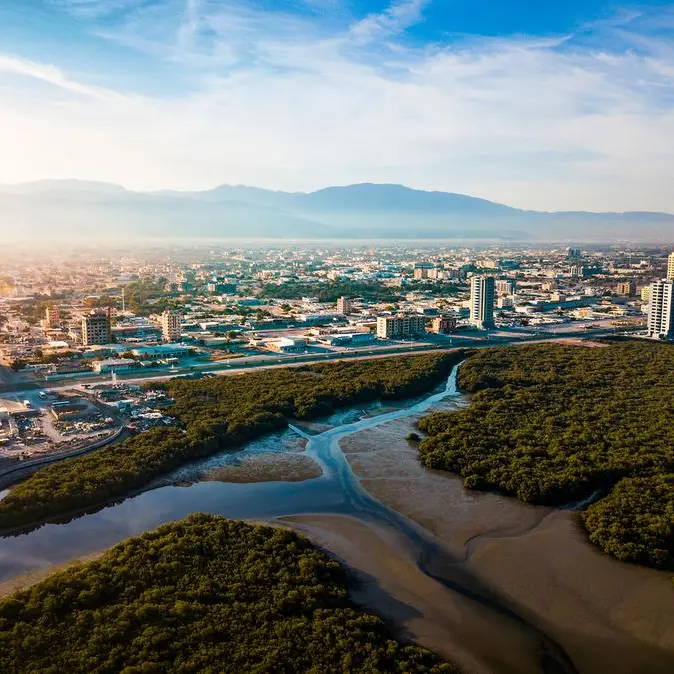Despite the challenge of Omanisation, the decline in the price of oil and various other issues, most local contractors and other construction-sector players expect growth in the industry to remain robust through 2015
In early July 2015 the Oman Railway Company (Oman Rail) moved one step closer to breaking ground on the sultanate's 2135-km rail network when it announced that it had pared down the list of bidders for phase one of the project from five consortia down to three. The planned national rail network - officially known as the Oman National Railway Project - is currently the country's single largest planned construction development. According to the professional services firm Deloitte, the project is expected to cost around $15.6bn in total, with completion scheduled for 2022.
Though Oman Rail is currently looking into the potential to carry out some components of the project on a public-private partnership (PPP) basis, the majority of this expenditure is expected to come from the government. "While the oil prices have dropped, most GCC countries are proceeding with their earlier plans for development," said Yusuf Nalwala, the managing director of the Al Ansari Group, a major Omani construction firm, as reported in Alpen Capital's June 2015 "GCC Construction Industry" report. "In particular, the government of Oman has set aside a significant budget for infrastructure projects."
Indeed, the rail network is just one of many ongoing or upcoming large-scale construction projects currently in the works in Oman. Other major initiatives include the $1.7bn ORPIC Liwa Steam Cracker and Polyethylene Project, which will produce plastics and fuel; the Duqm Special Economic Zone Authority's $1.3bn Liquid Terminal Project; and a wide range of road, air and other transport-related projects, among others. As suggested by Al Ansari's Nalwala, the financing for much of this work is expected to be provided by the state, even as spending on new developments in the private sector has slowed somewhat since mid-2014. "The Oman government recently announced that they would maintain spending, which is expected to keep things moving," RP Balakrishna, the CEO of the Oman-based interior design firm Services and Trade Company, told Alpen Capital.
Recent trajectory
The government's commitment to maintaining spending on new and ongoing projects bodes well for the sultanate's construction sector, which has seen steady expansion in recent years. Between 2007 and 2014 Oman awarded between $6bn and $8bn in new construction contracts on an annual basis, according to MEED. This is in line with the government's ongoing five-year development plan, which runs from 2011 through 2015, and under which the state allocated around OR2.5bn annually for infrastructure development. Transport infrastructure accounted for more than 65 per cent of this total, which includes capacity boosting and quality improvement projects in the rail, road, air and port segments. According to the Oman Society of Contractors, the construction sector has grown faster than the economy as a whole in recent years, posting annual average expansion of 5.5 per cent from 2009 through 2014. This rapid growth can be attributed in no small part to government spending on infrastructure, tourism-related projects and industrial development.
Oman, like many of its neighbours in the Gulf region, has been significantly affected by the decline in the price of oil. By late July 2015 the price of Brent crude, the international oil benchmark, was at around $57 per barrel, down from over $100 per barrel a year before, in June 2014. This latest figure represents an improvement on earlier in the year, when the price of Brent crude dropped below $50 per barrel. The decline has negatively impacted Oman's fiscal position, by most accounts to a considerable degree. In 2014 hydrocarbons accounted for 83 per cent of overall government revenues in the sultanate. This figure is forecast to drop to around 79 per cent in 2015.
Despite this situation however, the government has made it clear that it plans to move ahead with most major ongoing projects, and that many new developments are in the works. In Oman's 2015 budget, which was approved by Sultan Qaboos bin Said Al Said in early January 2015, the government effectively reiterated its intention to continue to spend substantial amounts on infrastructure for the foreseeable future. An announcement made by the government in October 2013, well before the price of oil began to fall, that it planned to spend $50bn on infrastructure through 2028 has not been rescinded in the period since, and numerous more recent announcements - not to mention annual budgets - all indicate continued expenditure moving forward.
Indeed, many local contractors and other construction-related firms envisage growth and expansion in the coming years. "In addition to the traditional drivers of the construction sector, mainly oil and gas and infrastructure projects, the activity in the power sector and on waste management projects is creating new prospects for local companies," Youssef Shammas, the managing partner of Target, an Oman-based contractor, told OBG in late 2014.
According to data published by Deloitte, as of mid-2015 there were $163.57m worth of construction projects planned or under way in Oman, which represented the fourth-largest construction pipeline in the GCC at the time. In addition to major transport, oil and gas, and tourism developments, a considerable amount of construction is expected to take place in the power, water and chemical segments, among others.
Market confidence
Shammas's upbeat outlook appears to be in line with current sentiment across the region as a whole. According to the most recent iteration of London-based law firm Pinsent Masons' annual "GCC Construction Survey", which was published in December 2014, the majority of industry representatives were positive about 2015. Some 77 per cent of survey respondents - the majority of whom work at firms that are involved in large-scale projects throughout the GCC region - felt optimistic about the industry, down from 90 per cent at the end of 2013.
The decline can be attributed to a variety of ongoing issues, including the fall in the price of oil, regional tensions, the rising cost of capital and a potential medium- to long-term softening in government order books. Nevertheless, some 33 per cent of survey respondents reportedly expected to see an upswing of at least 10 per cent in their order books over the course of 2015, down from 40 per cent a year earlier. The recent commitments by Oman's government to long-term infrastructure development have contributed to this optimism, as have similar programmes by other countries in the region.
Challenges
While this is encouraging, the domestic construction industry does face a variety of pressing challenges. The government's Omanisation policy, under which the state aims to boost the percentage of nationals working in the private sector, represents a significant hurdle for local contractors. The construction industry, which requires a substantial amount of unskilled labourers, employs more expatriates than most other sectors in the country.
According to data from the Oman Society of Contractors, as of late 2014 expatriates made up more than 92 per cent of the total sector workforce, accounting for 665,679 of 723,143 workers in total. The government has acknowledged this situation. In late June 2015, Salim bin Abdulaziz Al Meshaikhi, the director-general of employment at the Ministry of Manpower (MoM), was cited by the local newspaper Al Shabiba as saying that the government was well aware that a majority of the sultanate's expatriate workforce was employed in low-wage, low-skill positions in the service and construction industries, and that Omanis were unlikely to fill these short-term positions. Regardless, the government has moved forward with a variety of new Omanisation initiatives in recent years, including, in May 2014, a six-month extension of an existing outright ban on employing foreign workers in construction and housekeeping. The ban, which was originally introduced in November 2013, is similar to standing bans on foreign hiring in a handful of other industries, including carpentry and aluminium manufacturing, for example.
Government projects, Omani-owned and managed firms, and small and medium-sized enterprises (SMEs) are exempt from the ban. Furthermore, as mentioned earlier, the MoM recognises that the construction industry is in a unique position vis-Ã -vis employment. "We are flexible with regard to having Omanisation in the construction sector," Abdulqayoum Ali Al Zadjali, the head of follow-up on Omanisation at the MoM, told local media in late 2014.
Despite the challenge of Omanisation, the decline in the price of oil and various other issues, most local contractors and other construction-sector players expect growth in the industry to remain robust through 2015 and, in all likelihood, for the following half-decade, due primarily to government spending on new and ongoing projects in the areas of infrastructure, tourism, industry and, of course, oil and gas. Additionally, one key potential upcoming policy change bodes well for longer-term growth in the sector as well. Under the government's in-country value (ICV) programme, which was launched in late 2013, companies bidding for oil and gas contracts in Oman must show that they plan to make use of local materials, support services and contractors. Though the plan is relatively new, some local players have called for it to be extended to other industries, including the construction sector.
While the government already requires contractors to make use of local materials and building materials whenever possible, if the ICV programme were extended to the construction industry, it would likely benefit locally owned SMEs and local building materials producers significantly. The institution of an ICV initiative in the construction industry is still some way off, though it is currently a topic of debate in the industry. "The availability of goods locally is the number one factor to make ICV profitable for SMEs and worthwhile for the industry at the same time," Gert Hoefman, the CEO of Oman Cables, told OBG in mid-2014. "[That said,] there is a cut-off point where it is cheaper and faster to outsource abroad, so all local companies need to innovate and close that gap."
© Oman Economic Review 2015











